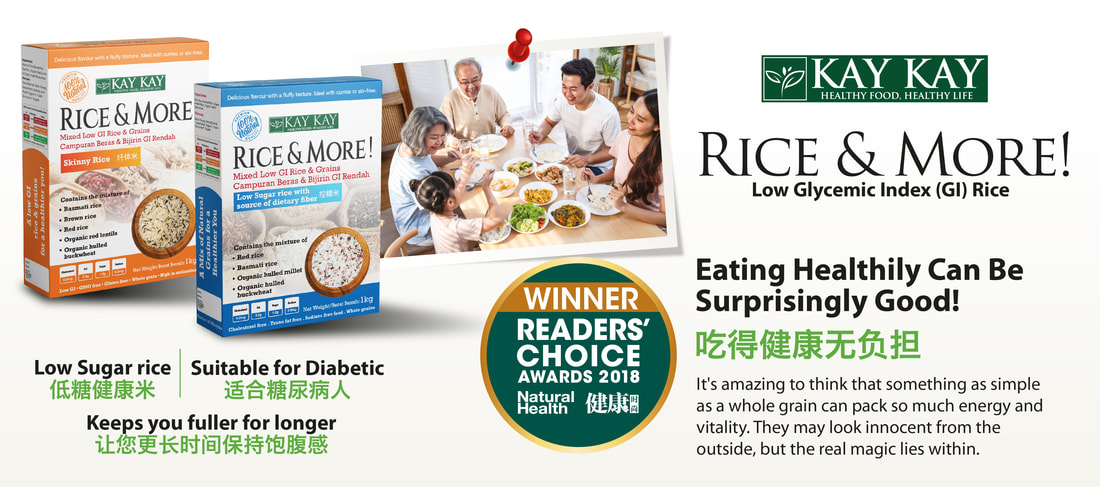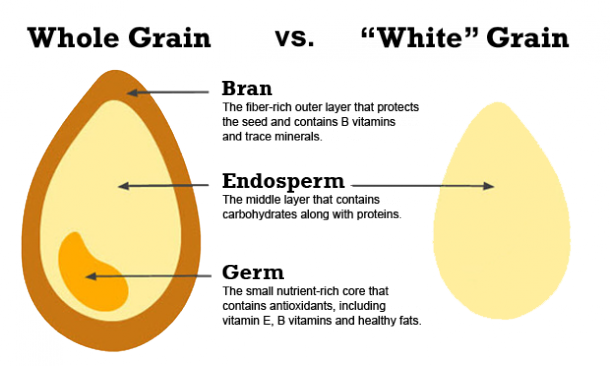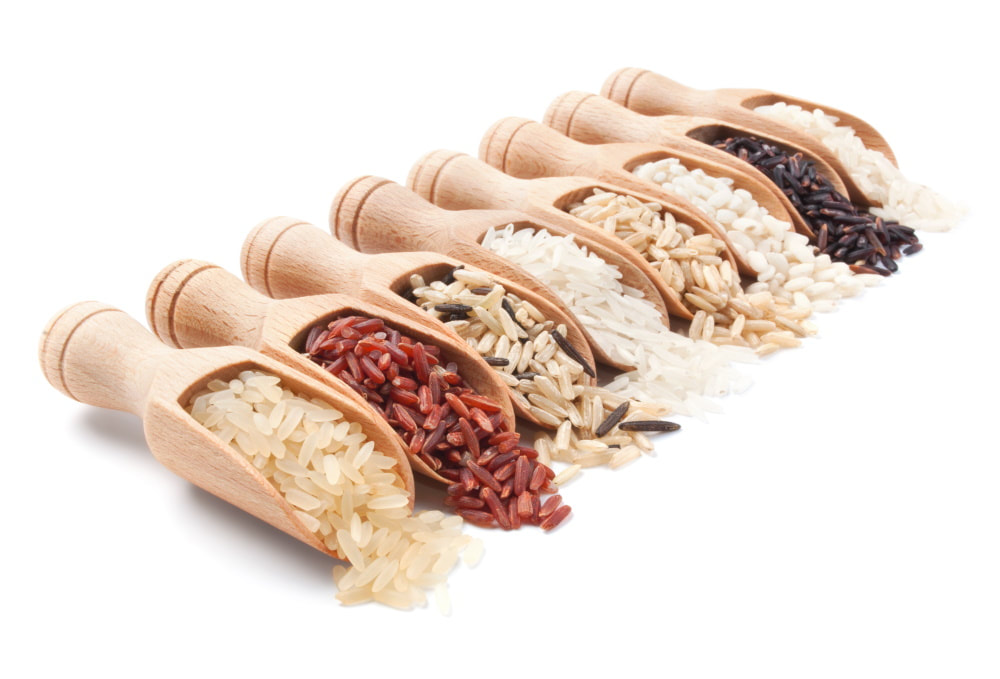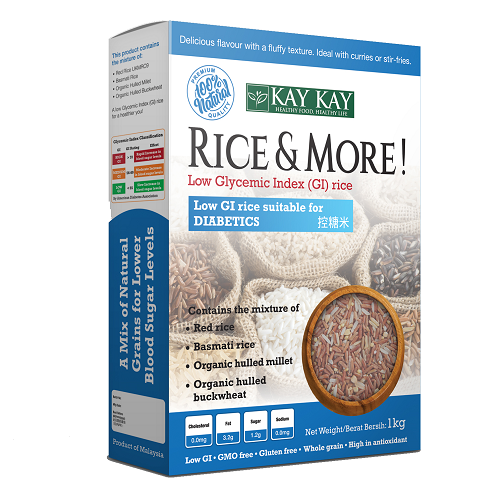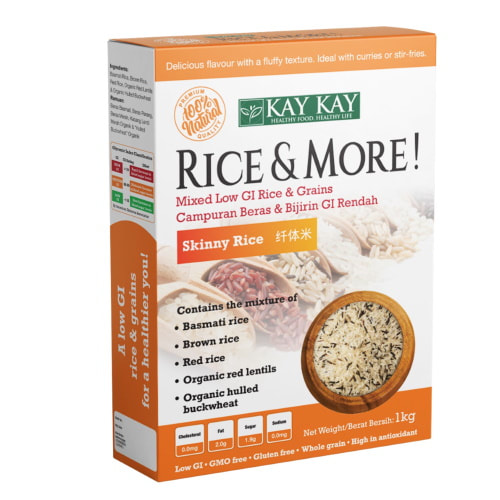The Whole Story - The secret of nature’s superfood. |
|
“Whole grains are defined as consisting of the intact, ground, cracked or flaked fruit of the grain whose principal components, the starchy endosperm, germ and bran, are present in the same relative proportions as they exist in the intact grain [1], [13].”
By The American Association of Cereal Chemists International and the FDA |
|
The edible part of a whole grain, the kernel, consists of three major parts: bran, germ and endosperm. Processed grains lack both the bran and the germ, making them void of dietary fiber, iron, and B vitamins. Whole grains, on the other hand, include all three parts, offering nutrients like fiber, complex carbohydrates, vitamins, minerals, fatty acids and antioxidants. All these nutrients work in harmony to provide health benefits that are greater than the sum of their parts. All grains start life as whole grains. Whole grains are the entire seed of a plant when they grow in the field. A grain is considered to be a whole grain as long as consist all three original parts — the bran, germ, and endosperm. It is protected by an inedible husk that protects the kernel from assaults by sunlight, pests, water, and disease. |
White rice are refined grains, for instance, because both have had their bran and germ removed, leaving only the endosperm. Refining a grain removes about a quarter of the protein in a grain, and half to two thirds or more of a score of nutrients. Whole grains are inherently richer in dietary fiber, containing ~80% more dietary fiber than refined grains [4].
|
Whole grains - a healthier optionCurrent scientific evidence indicates that whole grains play an important role in lowering the risk of chronic diseases, such as coronary heart disease, diabetes, and cancer, and also contribute to body weight management and gastrointestinal health. The essential macro and micronutrients, along with the phytonutrients present in whole grains, synergistically contribute to their beneficial effects [4].
It is clear that to maximize the intake of antioxidant compounds, rice should be preferentially consumed in the form of bran or as whole grain. An overview of the compounds in whole grain:-
|
Grain is the New SEXYAll our mix grains are crafted for deliciousness and to taste just like your normal rice.
It is made with the best natural whole grains that are nutritionally balanced and packed with genuine goodness. Our selected mixture of rice is functional and nutritious to the various needs of different consumer and the results is an aromatic, deliciously fluffy and combines beautifully with a multitude of dishes – spicy hot curries, sweet, spiced and savoury. |
References:
- American Association of Cereal Chemists International (AACCI) (2017) Retrieved from: http://www.aaccnet.org/initiatives/definitions/Pages/WholeGrain.aspx
- American Diabetes Association (2017). Retrieved from: http://www.diabetes.org/food-and-fitness/food/what-can-i-eat/understanding-carbohydrates/glycemic-index-and-diabetes.html
- Graf, B. L. et al. (2015). Innovations in Health Value and Functional Food Development of Quinoa (Chenopodium quinoaWilld.) Compr Rev Food Sci Food Saf. 14(4): 431–445.
- Jonnalagadda, S. S. et al. (2011). Putting the Whole Grain Puzzle Together: Health Benefits Associated with Whole Grains—Summary of American Society for Nutrition 2010 Satellite Symposium. The Journal of Nutrition. 141: 1011S–1022S.
- Kajla, p. et al. (2015). Flaxseed—a potential functional food source. J Food Sci Technol. 52(4):1857–1871.
- Kam, J. et al. (2016). Dietary Interventions for Type 2 Diabetes: How Millet Comes to Help. Frontiers in Plant Science. 7: 1454.
- Kim, S. J. et al. (2016). Effects of dietary pulse consumption on body weight: a systematic review and meta-analysis of randomized controlled trials. Am J Clin Nutr. 103(5): 1213-1223.
- Pengkumsri, N. et al. (2015). Physicochemical and antioxidative properties of black, brown and red rice varieties of northern Thailand. Food Sci. Technol, Campinas, 35(2): 331-338.
- Pintaudi, B. et al. (2016). The Effectiveness of Myo-Inositol and D-Chiro Inositol. International Journal of Endocrinology. 10:1155
- Se, C. H. et al. (2016). Evaluating Crossbred Red Rice Variants for Postprandial Glucometabolic Responses: A Comparison with Commercial Varieties. Nutrients, 20: 8(5).
- Srinivasa, D. et al. (2013). Glycaemic Index (GI) of an Indian Branded Thermally Treated Basmati Rice Variety : A Multi Centric Study. Journal of the Association of Physicians of India. Vol 61.
- The Greatest Guide to Slimming & Healthy Living by Wendy Green, ISBN 978-1-907906-00-8
- U.S. Food & Drug Administration (FDA) (2015). Retrieved from: https://www.fda.gov/ForConsumers/ConsumerUpdates/ucm151902.htm
- Varshini, V. et al. (2013). Brown Rice – Hidden Nutrients. Journal of Bioscience and Technology. Vol 4(1): 503-507.
- Zenel, A. M. & Steward, M L. (2015). High Amylose White Rice Reduces Post-Prandial Glycemic Response but Not Appetite in Humans. Nutrients, 7: 5362-5374.
